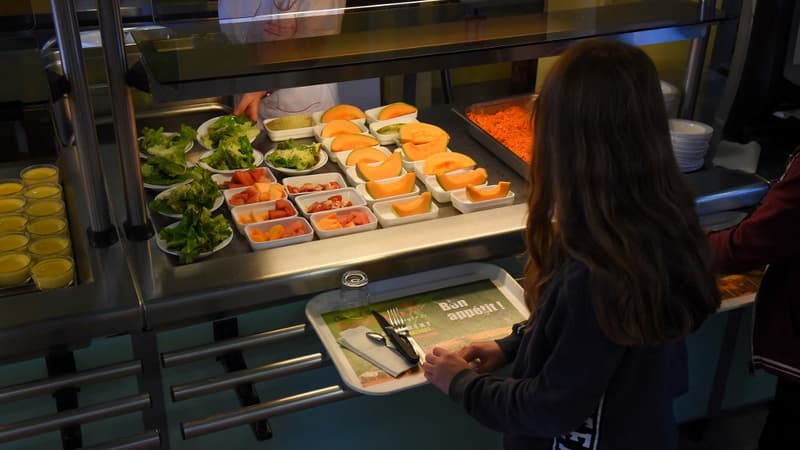At the end of 2022, the collective catering actors were sounding the alarm about inflation.
“Given the rise in prices, we cannot go any further. With every meal served in a diner, companies in our industry are losing money. we ask at least 9% increase compared to the prices charged on January 1, 2022. And if this is not possible, we ask to be able to break the contracts ”, it could be read in a collective forum.
A few months later, there are numerous case-by-case renegotiations of school canteen contracts and the consequent price increases. According the parisian20% of the communities (that had not yet done so) have updated their contract in recent weeks with an average increase of 9%.
+9% average
It should be remembered that the National Union for Collective Catering (SNRC), whose companies manage 40% of the country’s canteens, had already obtained from the town halls (which bill the parents of the students for this service) an increase of 4% for the year 2022-2023 as part of the annual renegotiations of the contract.
The question for cities and communities now is whether these increases will have an impact since they are the ones who set the prices that households pay.
The chose? Support all or part of this increase (and therefore reduce the budget of other spending items) or leave the rates as they are but increase local taxes, all in an already complex budgetary context. Or change the recipes of the meals that are served.
In Valbonne, in the Alpes-Maritimes, it was decided to increase the bill of families by 10%, our colleagues indicate. It is even +15% in Romans-sur-Isère, in the Drôme, according to RMC / BFMTV.
“Whether it’s the prices of food, electricity, heating and, obviously, the intervention of our agents on the spot, everything costs more”, justifies Edwige Arnaud, deputy delegate for Education.
less organic
On the contrary, in Ajaccio in Corsica and in Libourne in the Gironde, we have chosen (for the moment) not to increase the price paid by families.
In Libourne, the municipality sources (with other communities) from local suppliers and prepares meals for the 2,000 children enrolled in the soup kitchen, charging between 60 cents and 6 euros depending on the level of family resources.
In 2022, the city managed not to increase its purchase prices, but had to revise its quality ambitions downward.
“The Egalim law obliges us to reach 50% organic or short-circuit food, we have achieved this goal and aim for a 75% share by 2023. Therefore, we have had to give up this goal for the time being and wait the context is more favourable”, explains Thierry Marty, deputy mayor, education delegate for the city of Gironde, to BFM Business.
This local election actually illustrates a basic trend. “The consequence is that without additional help from the communities or the State, little by little we will reduce our purchases. We are in the process of stopping the commitments we had with organic producers, red label, locals that depend on collective catering”, explained to us at the end of 2022, Marie-Cécile Rollin, director of Restau’co (interprofessional network of collective catering).
+50% for organic prices this year
And that may not be enough. By 2023, “we are at +50% in organic prices”, alarms the manager, the increase in the final price paid by families seems inevitable in the cities.
“We have negotiated a 12% increase in the price of food with our suppliers. At the beginning of the school year in September, we will have an increase of 2% on average in the price of the canteen”, explains Thierry Marty.
A moderate increase that has been possible thanks to other measures such as the fight against waste. The city has also partnered with the Too Good To Go app, which allows unused trays to be recovered and resold at low prices. “This brings the city 4,000 euros a year,” says the manager.
In general, in France, the canteen affects approximately 1 in 2 students every day, that is, 6 million children and adolescents. Nearly a billion meals are served each year.
Source: BFM TV


